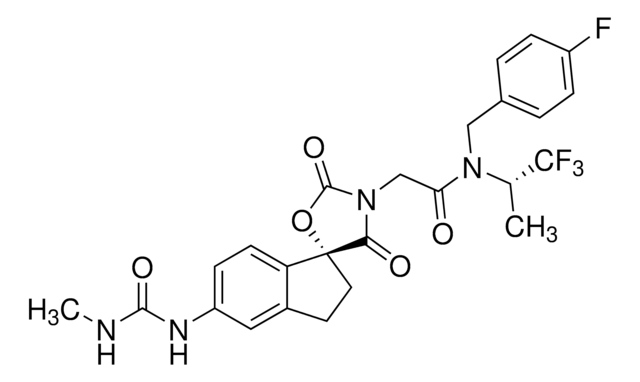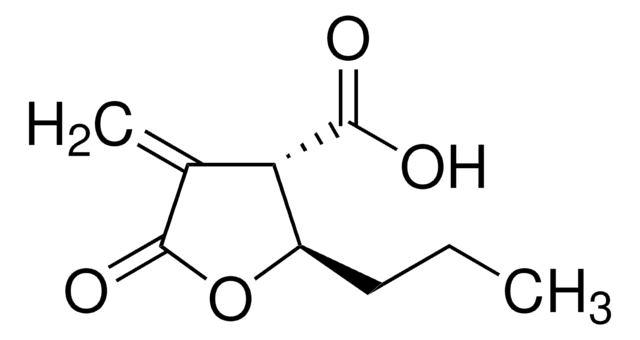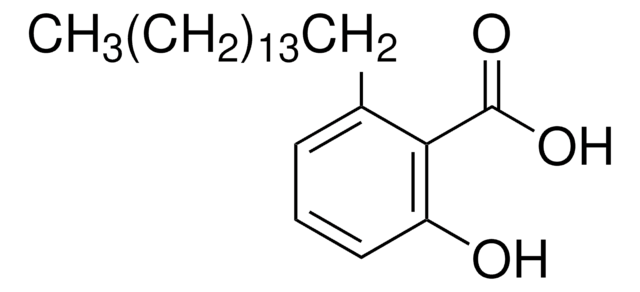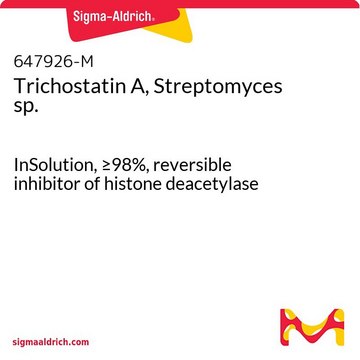382113
C646
≥99% (sum of isomers, HPLC), solid, histone acetyltransferase p300 inhibitor, Calbiochem®
Sinónimos:
Histone Acetyltransferase p300 Inhibitor, C646, 4-(4-{[5-(4,5-dimethyl-2-nitrophenyl)furan-2-yl]methylidene}-3-methyl-5-oxo-4,5-dihydro-1H-pyrazol-1-yl)benzoic acid, p300/CBP Inhibitor IV, Histone Acetyltransferase Inhibitor V, HAT Inhibitor V
About This Item
Productos recomendados
Nombre del producto
Histone Acetyltransferase p300 Inhibitor, C646, Histone Acetyltransferase p300 Inhibitor, C646, CAS 328968-36-1, is a cell-permeable, reversible inhibitor of p300/CBP HAT (Ki = 400 nM). Competes with acetyl-CoA for the p300 Lys-CoA binding pocket.
Quality Level
assay
≥99% (sum of isomers, HPLC)
form
solid
manufacturer/tradename
Calbiochem®
storage condition
OK to freeze
protect from light
color
brick red
solubility
DMSO: 50 mg/mL
shipped in
ambient
storage temp.
−20°C
InChI
1S/C24H19N3O6/c1-13-10-20(21(27(31)32)11-14(13)2)22-9-8-18(33-22)12-19-15(3)25-26(23(19)28)17-6-4-16(5-7-17)24(29)30/h4-12H,1-3H3,(H,29,30)/b19-12-
InChI key
HEKJYZZSCQBJGB-UNOMPAQXSA-N
General description
Packaging
Warning
Reconstitution
Other Notes
Legal Information
Storage Class
11 - Combustible Solids
wgk_germany
WGK 3
flash_point_f
Not applicable
flash_point_c
Not applicable
Certificados de análisis (COA)
Busque Certificados de análisis (COA) introduciendo el número de lote del producto. Los números de lote se encuentran en la etiqueta del producto después de las palabras «Lot» o «Batch»
¿Ya tiene este producto?
Encuentre la documentación para los productos que ha comprado recientemente en la Biblioteca de documentos.
Nuestro equipo de científicos tiene experiencia en todas las áreas de investigación: Ciencias de la vida, Ciencia de los materiales, Síntesis química, Cromatografía, Analítica y muchas otras.
Póngase en contacto con el Servicio técnico








